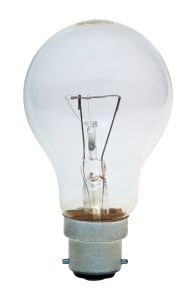

Lit when software patents are annulled.
Yet Another Study Shows That Patents Lead To Sub-Optimal Innovation
[...]
A few months back, two professors, Andrew W. Torrance and Bill Tomlinson, published a paper on a simulation game they ran to test out some of these hypotheses. A bunch of folks submitted this back when it first came out, but I wanted to spend some time looking over the details before writing about it. Basically, Torrance and Tomlinson create a nice simulation system that really does a good job simulating the various models for innovation with patents or in a more collaborative world. And, what they found in the simulation they ran supports what has actually happened in the real world, according to the research we've discussed in the past:These results indicate that current patent systems (that is, systems combining patent and open source protection for inventions) may generate significantly lower rates of innovation (p<0.05), productivity (p<0.001), and social utility (p<0.002) than does a commons system. This suggests that current patent systems may significantly deter, rather than spur, technological innovation compared to a commons system.Specifically, the results compared three separate models: one where everything gets patented, one where it's a hybrid model with both patents and a common, and one that was pure commons. The results are pretty striking. In the pure commons (no patents) world, they ended up with more innovation, significantly greater productivity and massively more social utility.
The Case against Literary (and Software) Patents
[...]
Imagine the outcry if the courts were to legalize patents on English prose. Suddenly, you could get a "literary patent" on novels employing a particular kind of plot twist, on news stories using a particular interview technique, or on legal briefs using a particular style of argumentation. Publishing books, papers, or articles would expose authors to potential liability for patent infringement. To protect themselves, writers would be forced to send their work to a patent lawyer before publication and to re-write passages found to be infringing a literary patent.
[...]
The patent at issue in Bilski is not a software patent; it is a "business method" patent that claims a strategy for hedging against financial risk. But the case is being closely watched for its effects on the software patent issue. Patented business methods are often implemented in software; for example, a key decision on the patentability of software, State Street Bank v. Signature Financial Group, involved a software-implemented business method. And the standard articulated by the Federal Circuit in Bilski, known as the "machine-or-transformation test" has been used by the Patent Office in recent months to invalidate several software patents. The Supreme Court could ratify the Federal Circuit's mildly restrictive standard, or it could articulate its own standard that is either more or less restrictive of patents on software.
Reiterating that software cannot be patented would be a dramatic step, but it would be the right one. Supporters of software patents insist that barring software patents would be throwing the baby out with the bathwater. But it's not clear there was a baby in there to begin with. Empirical research suggests that software patents are dramatically less effective at promoting innovation than other categories of patents, producing more litigation and smaller revenues for innovators.
Most software companies infringe patents
[...]
In a report, Cato denizen Timothy Lee compared patents on software and business processes to patents on English prose.
[...]
Since patent protection was first extended to software in the 1980s, it is difficult or impossible to create any significant software without infringing one or more patents. With tens of thousands of new software patents granted every year, and no effective indexing method for software patents, there is no cost-effective way to determine which patents cover any piece of software.
It has the technical advantage of being really simple-minded and that's something many people from the embedded swamp will be happy about, because this means they have some chances of understanding it. At the base of FAT sits a so-called 'ressource-map allocator' which is one of the oldest and most primitive memory management schemes in existence, And who would want to throw all this DOS-code away for as long as there is still somebody willing to buy it again? . After all, products are sold by devising innovative marketing strategies, especially since 'the customer' isn't going to understand anything about them anyway, not the least be- cause technical information is usually shot down by pointing out that anything requiring more thought than 'the cavemen interface' ("point&grunt", term coined by E. Moglen) is just to complicated for the average cavemen (who still spends a sizable amount of his time with roasting raw meat on open fires and trying to make sexually useful contacts while doing so).
Yes, it appears most technology marketers take Scott Adams' advice and aim their products at the "Stupid Poor" market segment, with a view to eventually following Microsoft's lead and breaking into the "Stupid Rich." What I don't understand is why they get so annoyed when people from the other two market segments try to buy/use their products. Does the 'smart money' have a different exchange rate?